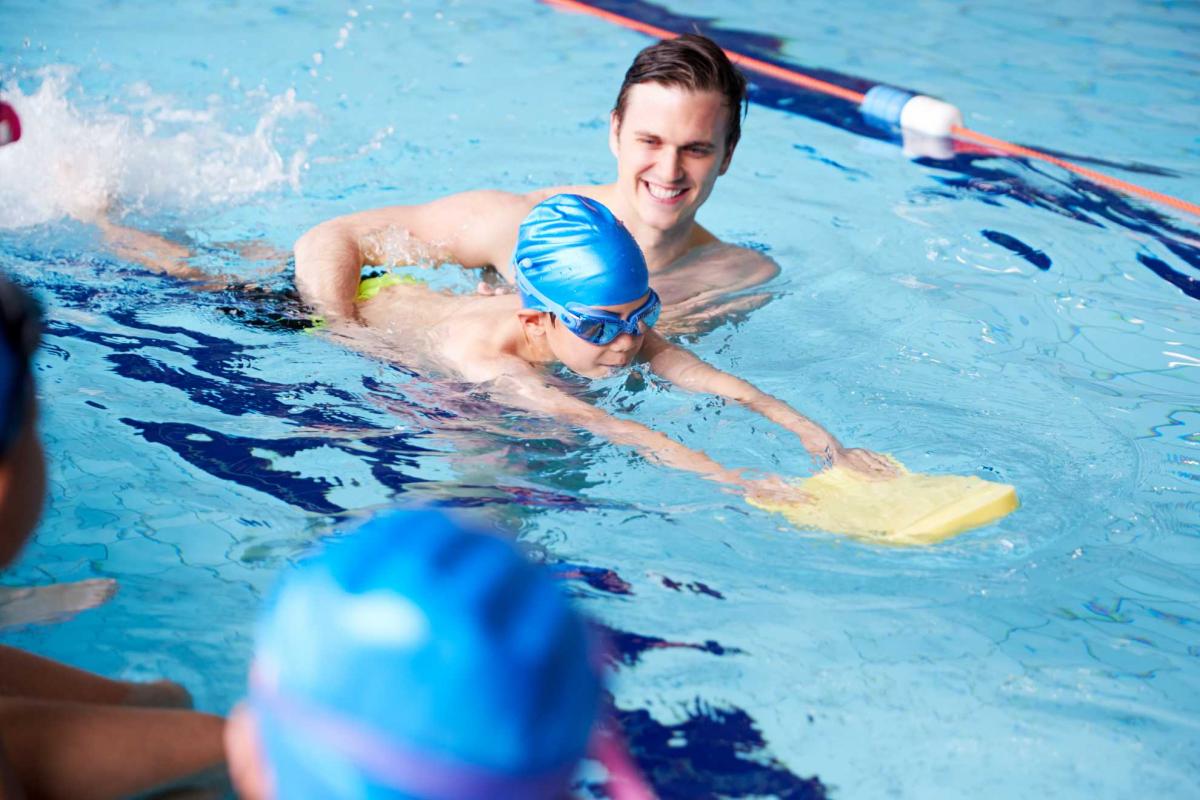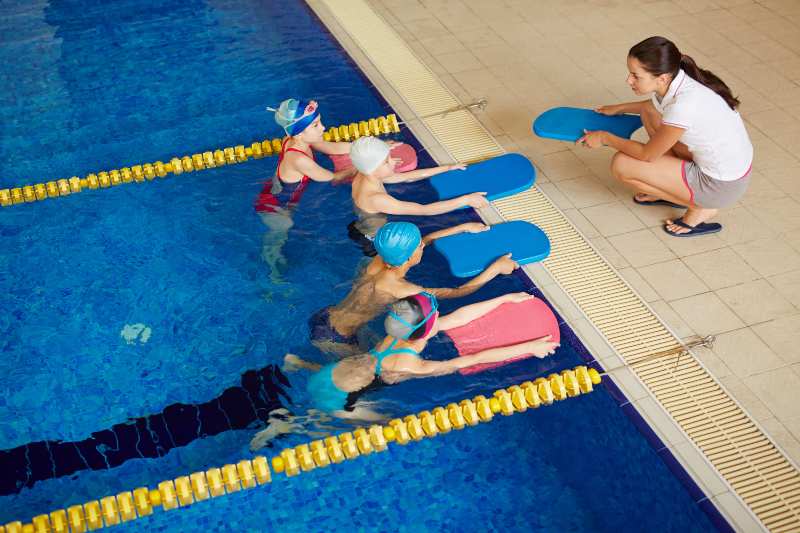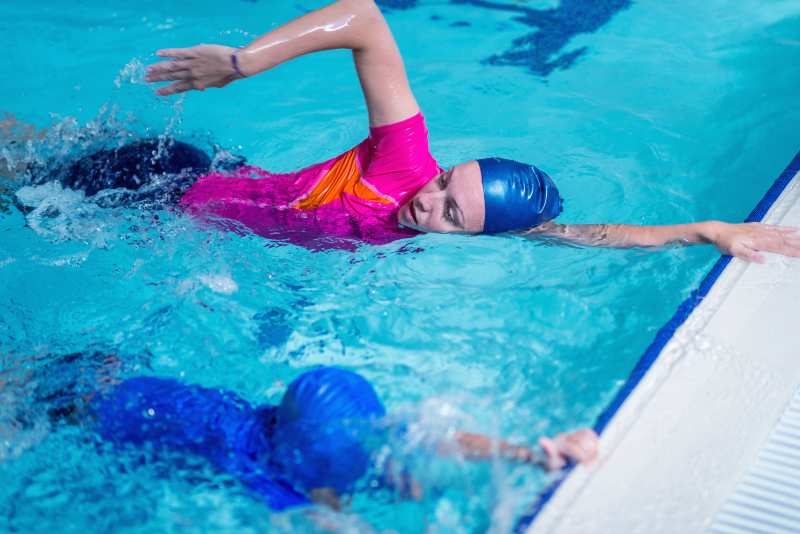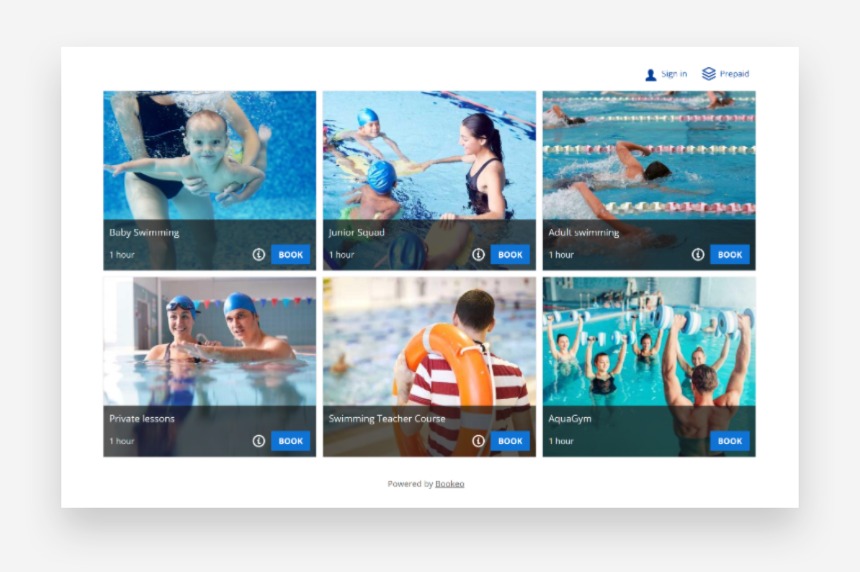
How to Start a Swimming Lesson Business in 2025?
Learning how to swim is an essential and valuable life skill that can potentially save lives, and at the same time, swimming is also a popular recreational activity for anyone—kids, adults, and even the elderly. It is always a great way to have fun and stay fit at the same time.
With that being said, if you are thinking about starting a swimming lesson business, it has the potential to be a profitable and rewarding venture.
Whether you are an ex-athlete, someone with a passion for teaching, or simply an entrepreneur looking to capitalize on the growing demand for swimming lessons, this article will provide you with everything you need to know to get started.
In this guide on how to start a swimming lesson business in 2025, we will explore the key considerations involved in starting a swimming lesson business and a step-by-step guide on how to start your successful business.

This guide will cover the following:
- Understanding the market demand and the target audience for swimming lessons
- How to create a winning plan for your swimming lesson business
- Defining the scope of your swimming lesson business
- Choosing the right location and equipment
- Registering your business and obtaining the necessary licenses
- Hiring trainers and qualified staff
- How to develop curriculum and lesson plans for your swimming lesson business
- How to market your swimming lesson business and attract more clients
- How to manage your operations by implementing an efficient booking/scheduling system
And more.
By the end of this article, you will have a solid foundation and a clear roadmap on how to start your swimming lesson business and achieve growth.
So, let’s dive in and explore the exciting world of entrepreneurship and teaching swimming skills!
Swimming Lesson Industry: An Overview
The swimming lesson business, at its core, is about getting paid for providing swimming training and instruction. The target clients can be individuals of various skill levels and age groups: teaching children or beginners how to float and start paddling, helping experienced swimmers refine their techniques, helping people to be able to swim longer and further, and so on.

The swimming lesson industry is a massive industry, with the global market size estimated to be worth more than $17 billion in 2022, and it is still expected to grow at a steady rate. The growth of this industry is driven by several key factors, including:
- Swimming is growing in popularity as a recreational activity for people of all group ages. At the same time, there’s also increasing popularity of aquatic recreational activities such as synchronized swimming, water polo, and others, which also drove the growth of the swimming lesson industry.
- There has been a rising disposable income of people, especially those in emerging markets.
- With drowning being the top cause of death for children under the age of 5, there has been an increased awareness of the importance of swimming lessons for safety.
Target Audience and Segmentation
The target audience for swimming lessons is diverse and can be segmented by age group, type of lesson, and location:
- By age group: the target audience may include children, teenagers, adults, and seniors. The children segment is the largest segment and often accounts for the majority of the market share.
- By type of lesson: we can segment the swimming lesson businesses into group lessons, semi-private lessons, and private lessons. The group lessons segment is the largest segment.
- By location: we can segment the industry into indoor pools, outdoor pools, and home pools.
Parents with toddlers or young children often enroll their children in swimming lessons to promote early skill development (and for water safety reasons), making this the largest potential target audience. However, adults may seek swimming lessons for one reason or another. Some may be learning to swim for the first time in their adulthood, and some others may only look to improve their technique.
Competitive Landscape
Your key potential competitors in the swimming lesson industry may include swim schools, municipal pools providing lessons, private instructors, and community aquatic centers, among others.
This industry can be competitive, especially in locations with high population density and areas where there are a lot of families with children.

To differentiate yourself from your competitors, you can consider offering unique values and benefits, such as:
- The quality of instructors and instruction (curriculum)
- The reputation of your school (or instructors), including certifications and accolades
- Facility amenities
- Good customer service
- Availability of specialized programs
Business Model
As discussed, swimming lesson businesses may offer group lessons, private lessons, or semi-private lessons. Group lessons tend to be more affordable, and private lessons are the most expensive. Semi-private lessons (i.e., with a small group of friends) provide the middle ground.
Swimming lesson businesses or instructors typically charge by the hour, and the cost may vary depending on the experience/certification of the instructor, the location of the lesson, and the type of lesson provided. For example, a group lesson at a local outdoor pool might cost $15 per hour, while a private one-on-one lesson at a private indoor pool might cost $50 per hour.

In 2024, the average cost of a private swimming lesson is $25/hour, while the average cost of a group swimming lesson is $15/hour.
Research and Planning Your Swimming Lesson Business
Before you start your swimming lesson business, it’s crucial to first conduct thorough research to ensure comprehensive planning.
Here are the steps involved in this research and planning phase:
1. Understanding the market demand
Is it viable to start a swimming lesson business in your area in the first place? If there’s not enough demand in your area, it won’t be a good idea to start this business, no matter how prepared you are.
Consider:
- Study the demographics of your local population. This includes age groups, income levels, education levels, family composition, and more. As discussed, parents with children tend to be the largest customer segment for swimming lessons.
- Once you have a good understanding of your market, the next step is to identify your target audience based on age groups, skill levels, or specific needs. Try to identify and understand their motivations for joining swimming lessons (water safety, recreation, fitness/weight loss, skill development, etc.)
- Evaluate the existing competition in the area. Are there other swim schools, private instructors, or community pools offering lessons? If yes, analyze their offerings, reputation, and pricing strategy.

Identify who you are trying to reach with your swimming lesson business and whether there is enough demand available in the area you are planning to operate the business in. What are their needs and wants? Who are your competitors?
Once you know and understand who your target audience is, you can tailor your marketing and promotion efforts to reach them.
2. Defining the scope of your business
To properly cater to your target audience’s needs and to differentiate your business, it’s important to define the scope of your swimming lesson business and its offerings. Consider the following:
- Determine the types of swimming lessons to offer
Will you offer group lessons, private lessons, semi-private, or all of them? Also, decide whether you will offer lessons for beginners, intermediate, or advanced swimmers based on your abilities. Based on your target market
Based on the market demand in your area, decide whether you will offer lessons for specific age groups or specialized programs such as infant/toddler swimming classes, classes for adult beginners, water aerobics, competitive swimming training, and so on.
- Decide on lesson frequency and duration
Plan your curriculum and decide how long your swimming lessons will be. Determine the optimal duration for each session depending on the type of lesson you are offering. The common duration for a swimming class is between 30 minutes and 1 hour.
Also, decide on the frequency of lessons. Will you offer lessons once a week, biweekly, or intensive daily classes during school breaks?
3. Creating a business plan
By now, you should have figured out all the important details about your business, so the next step is to write a business plan.
A business plan will be especially useful if you are planning to secure outside funding (investment or loan.) However, even if you are planning to fund the business by yourself, a well-written business plan will be a useful blueprint and roadmap for success and shouldn’t be underestimated.
At the very least, your business plan should include the following components:
- Goals and objectives
Define your swimming lesson business’s short-term and long-term goals. For example:
- The number of students who enroll
- Total hour of lessons provided each month
- Revenue targets
- Opening in more locations
For each goal, establish measurable milestones and KPIs. For example, if your goal is to increase the number of students, you’d want to establish a system to measure customer satisfaction.

- Costs and potential revenue
Estimate the costs and potential revenue for your swimming lesson business so you can properly plan your budget and finance details. Important expenses to consider include:
- Facility (pool) rental
- Labor costs (instructor, staff salaries)
- Insurance
- Equipment costs
- Marketing and promotion
Conduct a thorough financial analysis to determine how much revenue you can generate from your swimming lesson so you can communicate in the business plan that your business is financially viable.
You can also determine and elaborate on your pricing strategies in the business plan.
- Marketing and promotion strategy
No matter how well you’ve planned and executed the swimming lesson business, you won’t achieve success if you can’t attract enough students.
You need to develop a comprehensive marketing strategy to reach your target audience effectively: what marketing channels will you focus on? How much will you spend on promotions and marketing? How will you define marketing success?
Consider using a mix of offline and online (digital) marketing channels like social media, a professional website, local advertising, referral programs, and partnerships with local businesses like schools and community organizations.
Starting Your Business: Legal Considerations
To legally start and operate a swimming lesson business, there are several important considerations to have, which we will discuss below.
Registering your swimming lesson business
You will need to register your business with your local or state government. The actual process may vary depending on your location, but here are the typical steps:
- Choosing a business name: select a unique, easy-to-pronounce, and easy-to-remember name for your swimming lesson business. Make sure this business name is not already used by another business.
- Choose a business structure: you may choose from different legal structure options for your business, such as sole proprietorship, partnership, corporation, or LLC (Limited Liability Company.) If necessary, consult with a legal professional to choose the most appropriate structure for your swimming lesson business.
- Registering the business: fill up the necessary paperwork and register your business with the appropriate government authorities (i.e., the secretary of state’s office or your local county clerk.) Depending on your location, you may need to pay some fees.
Obtaining necessary licenses and permits
In addition to registering your business, you may be legally required to obtain certain licenses and permits.

Check with your local government body or municipality to get more information about the specific licenses and permits required for starting and operating a swimming lesson business.
However, most states will require you to get a business license, a lifeguard certification (more on this below), and a pool permit.
Certification requirements
Some jurisdictions may require you (or your instructors) to be certified before you can give swimming lessons.
Yet, even if certifications are not a legal requirement, they can demonstrate that your instructors have the knowledge, skills, and experience necessary to teach swimming safely and may help you win more clients.
Consider getting certifications from reputable organizations such as American Red Cross, YMCA, or National Swimming Pool Foundation (NSPF).]
Insurance requirements
Similar to certifications, insurance may or may not be legally required in your location, but getting insured can help protect yourself in case of accidents.

Consider getting the following insurance policies:
- General liability insurance: will protect your swimming lesson business from claims related to bodily injury, accidents, or property damage that may occur during your swimming classes.
- Professional liability insurance: also known as “errors and omissions” insurance, this type of insurance provides coverage against claims related to damage caused by negligence, improper instructions, or any failure to meet compliance or industry standards.
- Worker’s compensation insurance: if you have any employee, you may be legally required to have worker’s compensation insurance. This type of coverage protects your employees when they are unable to work due to work-related illnesses or injuries.
It’s best to consult with legal professionals in your area to ensure compliance with jurisdiction-specific regulations. Tackling these legal considerations ASAP can allow you to focus on providing quality service, attracting more clients, and growing your business.
Managing Scheduling and Ensuring Efficient Operations
Now that your swimming lesson business is up and running, in this section, we will focus on how to manage your operations effectively.
Here are some tips to help you streamline your operations, provide a seamless customer experience, and maintain a safe learning environment.
1. Implement an online booking/appointment system
Today’s customers simply expect the convenience of online booking, where they can book and schedule their swimming lessons from anywhere, 24/7, even with their mobile phone.
If they can’t book their lessons online, they’ll simply move to your competitors. Obviously, you wouldn’t want that to miss out on this potentially large market, so having a functional online booking is simply a must.

On the other hand, managing lesson schedules can be a major hurdle for a swimming lesson business, especially when you have multiple instructors and varying class sizes. This is where having an online booking system that can also simplify the scheduling management process, like Bookeo can be very valuable for your business.
Bookeo allows customers to easily browse available time slots and instantly book slots that best suit their schedules. All bookings will be centralized in one platform that will automatically update the availability of class slots and instructors when there’s a new booking.
In short, an online booking system for swim lessons allows you to ensure real-time scheduling, and convenience for your customers/students, and avoid overbooking.
2. Establish clear communication channels
Communication is a critical key to success for any business, and it is especially important for educational businesses like your swimming lesson company.
If you can’t communicate effectively with your students (or parents of students), as well as your instructors, you won’t be able to ensure a smooth operation.
Consider the following:
- Ensure prompt and professional communication with customers through a wide variety of channels: phone, text messaging, email, social media, live chat on your website, etc. Make sure communication quality and tone are consistent across all channels.
- Be responsive to inquiries and concerns, including negative feedback. Provide clear and concise information, and don’t make any promises you can’t deliver.
- Use automated confirmations and reminders/notifications to keep customers informed about their schedules. An online booking solution like Bookeo can also help with this.
3. Develop a comprehensive schedule
Create a concise, well-planned, and balanced swimming lesson schedule. You will need to consider factors such as class sizes, different skill levels of students, and instructor availability.
Consider the following tips:
- To optimize facility usage, aim to spread class evenly throughout the week
- Include a variety of class times to accommodate different customer preferences
- Be flexible with your schedule. Keep a structured schedule to avoid confusion, but be prepared to make changes as needed.
- Efficiently schedule instructors while considering their availability and expertise
4. Prioritize safety
Safety should be your top priority in running the swimming lesson business. Prioritize the following:
- Make sure your facility is 100% safe and conduct regular safety inspections
- Ensure instructors and staff are adequately trained in water safety and first aid (including CPR)
- Maintain a clean environment and equipment for both students and staff
- Strictly establish and enforce clear safety protocols not only during swimming lessons but for all facility usage
5. Maintain accurate records/documentation
Keeping accurate records is especially important for a swimming lesson business, not only for administrative purposes but to maintain communication with students or parents and ensure legal compliance.
Keep organized records and documentation for:
- Student registration
- Medical information
- Waivers
- Progress reports of students

Make sure your records are properly organized and accessible, preferably in a centralized place/system for keeping them accessible and up-to-date.
Scaling and Growing Your Business
Congratulations on reaching this section!
By now, you should have all the important foundations to run your swimming lesson business successfully. Yet, the business won’t attract students and grow by itself.
In this section, we will explore the strategies for scaling and growing your operations to reach more students and expand your impact. Here are the key steps:
1. Establish and execute a comprehensive marketing strategy
How to effectively market your swimming lesson business deserves its own guide, but consider the following:
- Develop a professional website for online presence:
-
-
- Create a well-designed and functional website that is user-friendly
- Provide clear and concise information about your swimming lesson programs, instructors, facility, class schedules, pricing, and registration process
- If possible, include success stories and testimonials from satisfied students or parents to help establish credibility
-
- Utilize social media marketing:
-
-
- Create social media profiles on relevant social media platforms depending on your target audience (i.e., Facebook, Instagram, Twitter, etc.)
- Post informative and engaging content regularly. You can post swimming tips, water safety, student achievements, etc., to gain more followers and engage existing ones.
- Leverage the paid advertising options offered by these social media platforms to reach more potential customers
-

- Offer free trial classes or discounts: offering free trial classes or introductory packages at a discount can allow potential students to experience your lessons and facilities before making the full commitment.
- Leverage reviews and testimonials:
-
-
- Encourage satisfied students or parents to leave positive reviews on Google Business, Facebook, Yelp, or other relevant platforms.
- Display these reviews prominently on your marketing materials, social media profiles, and website to build rapport with potential customers
-
- Create and publish engaging content: regularly produce informative and engaging content in various forms (blog posts, videos, infographics, etc.) and share this content on your website, email newsletters, and social media. You can mainly cover swimming tips, the benefits of swimming, and water safety tips. High-quality content will help position your business as a credible authority in your niche.
2. Collaborating with schools, community organizations, and other businesses
Networking and collaborating with others in your community shouldn’t be overlooked as a powerful way to promote your swimming business.
Here are some tips you can consider:
- Attend local business events and build relationships with other businesses in your area that have a similar target audience (i.e., fitness centers, water sports retailers.) You can partner with these businesses to offer cross-promotions or discounts.
- Consider collaborating with local schools. You might be able to offer swimming lessons as part of their PE curriculum or as an extracurricular activity.
- Partner with community centers in your area, which may help you amplify your reach to a wider audience within the local community.
- Seek sponsorship opportunities from local businesses or organizations to support equipment purchases, events, or promotional activities
- Partner with local facilities (i.e., hotels or resorts) to offer swimming lessons in their swimming pools. This may also help enhance your business’s reputation and credibility.
3. Evaluating business performance and ensuring continuous optimization
Your business may not achieve the level of success you desired from the get-go, so it’s important to regularly review your business performance:
- Track and analyze KPIs: regularly assess key performance indicators (KPIs) like customer retention, revenue, booking rates, student progress, and customer satisfaction. Try to identify inefficiencies and areas where you can improve.
- Gather customer feedback: actively gather feedback from your students or parents through surveys (offline or online) or direct conversations. Use their feedback to address concerns and make the necessary adjustment to improve your business model.
- Analyze and optimize profitability: evaluate your classes and programs’ profitability. Prioritize those that generate the most profits and reallocate your resources accordingly.
- Optimize operations: based on the collected data, streamline administrative processes, staffing/instructor scheduling, and class management to ensure cost-efficiency and optimal productivity.
4. Expanding services and introducing new programs
To scale and grow your swimming lesson business, consider expanding your services and programs, for example:
- Introduce advanced classes: consider offering advanced classes for adult/experienced swimmers looking to refine their techniques. If your instructors are capable, you can even offer lessons to help professionals/aspiring professionals prepare for competitions.
- Other aquatic activities: you can offer lessons for other activities, such as water aerobics, aqua fitness, swim team training, lifeguard training, and so on, to reach more customers and increase your revenue.
- Seasonal or theme-based programs: if possible, introduce theme-based or seasonal classes both to attract new customers or encourage existing students to take more classes.
- Parent and child programs: offer parent and child swimming classes if you haven’t already.
- Private lessons: if your resources allow, consider offering private one-on-one lessons. You can also offer private classes for those who have specific learning needs.
Conclusion
Starting a swimming lesson business can be a lucrative and rewarding venture, but there are still a number of factors to consider to achieve success.
For instance, it’s important to have a well-organized and efficient operation, so you can consistently provide a high-quality experience for your students.
By taking the steps we’ve shared in this guide and preserving through the challenges along the way, you can build a thriving swimming lesson business that not only is profitable but also brings joy and learning to your students.

